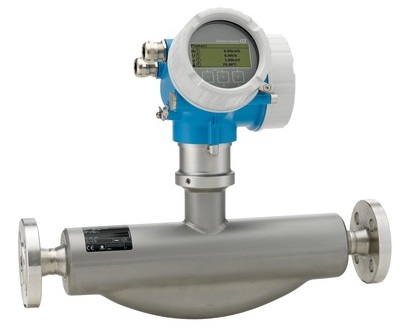ترانسمیتر فشار ویکا
مرکز تخصصی تجهیزات ترانسمیتر و ترانسمیتر فشار دما و ....ترانسمیتر فشار ویکا
مرکز تخصصی تجهیزات ترانسمیتر و ترانسمیتر فشار دما و ....روزانهها
همه- لول سوئیچ روتاری RLS20
- خرید سنسور ph سنسور ph برند اندرس هاوزر آلمان
- مس فلومتر
- فلومتر کوریولیس مدل CNGmass
- مس فلومتر اندرس هاوزر مدل Promass 80F
- ترانسمیتر سطح راداری مدل FMR51 سطح سنج راداری
- فلومتر کوریولیس معرفی و بررسی فلومتر کوریولیس
- فلومتر فلومتر | جریان سنج | دبی سنج
- فلومتر فلومتر | دبی سنج | جریان سنج
- Field Xpert SMT70 تبلت اندرس هاوزر
- اینسترو کنترل
- فلومتر التراسونیک فلومتر التراسونیک چیست و چگونه کار می کند؟
- اندرس هاوزر
پیوندها
- مس فلومتر
- خرید سنسور ph سنسور cps11
- سوئیچ سطح روتاری ایرانی ساخت گروه صنعتی ابزار دقیق مهام
- تعمیرات تخصصی اینورتر های AC و DC در مشهد تعمیرات برند های مطرح بازار SIEMENS / DELTA , .......
ابر برچسب
ترانسمیتر فشار فلومتر التراسونیک ترانسمیتر فشار چیست قیمت ترانسمیتر فشار ابزار دقیق خرید ترانسمیتر فشار فلومتر اندرس هاوزر ترانسمیتر سطح التراسونیک نمایشگر 4 تا 20 میلی آمپر ترانسمیتر اختلاف فشار ترانسمیتر فشار مشهد ترانسمیتر فشار ویکا اندرس هاوزر فلومتر ترانسمیترجدیدترین یادداشتها
همه- راهنمای جامع برای ترانسمیتر سطح آلتراسونیک FMU41: ابزار قدرتمند برای اندازه گیری سطح مایعات
- تعمیرات تخصصی انواع اینورتر های AC / DC
- سوئیچ سطح روتاری ایرانی ساخت گروه صنعتی ابزار دقیق مهام
- [ بدون عنوان ]
- ابزاردقیق در صنایع دارویی
- اندازه گیری سطح رادیو متریک
- فلومتر التراسونیک G300
- ترانسمیتر سطح راداری وگا VEGAPULS 6X
- ترانسمیتر کنداکتیویته و غلظت CLD134
- فلومتر التراسونیک قابل حمل Prosonic Flow 93T
نویسندگان
- حسین 62
بایگانی
- اردیبهشت 1403 1
- فروردین 1403 1
- بهمن 1402 1
- شهریور 1402 1
- دی 1401 5
- شهریور 1401 1
- مرداد 1401 1
- اسفند 1400 1
- دی 1400 2
- مهر 1400 3
- شهریور 1400 7
- تیر 1400 5
- خرداد 1400 14
- اردیبهشت 1400 15
- فروردین 1400 4
تقویم
اردیبهشت 1403| ش | ی | د | س | چ | پ | ج |
| 1 | 2 | 3 | 4 | 5 | 6 | 7 |
| 8 | 9 | 10 | 11 | 12 | 13 | 14 |
| 15 | 16 | 17 | 18 | 19 | 20 | 21 |
| 22 | 23 | 24 | 25 | 26 | 27 | 28 |
| 29 | 30 | 31 |
جستجو
فلومتر جرمی کوریولیس
فلومتر جرمی کوریولیس ( Coriolis Mass Flowmeter ): 
این فلومترها براساس پدیده کوریولیس عمل می کنند؛بدین صورت که یک یا دو لوله ی موجود در محفظه فلومتر توسط یک سیم پیچ تحریک با یک فرکانس مشخص شروع به نوسان می کند. حال حرکت سیال از داخل لوله ها باعث ایجاد نیروی عمود بر لوله ها می شود که این نیرو به نیروی کوریولیس معروف است و این نیرو در سرتاسر لوله یکسان نمی باشد و به همین دلیل ابتدا و انتهای لوله ها باعث انحراف جزئی می شود.با قرارگیری دو سنسور مغناطیسی در ابتدا و انتهای لوله ها و اندازه گیری ولتاژ خروجی و تعیین اختلاف فاز و اختلاف فرکانس خروجی سنسورها،بترتیب دبی جرمی و چگالی سیال بدست می آید.مشخص است که با داشتن دو پارامتر جرم و چگالی،دبی حجمی به راحتی قابل محاسبه است.ازاین فلومترها جهت اندازه گیری دبی مایعات و گازها،مایعات دو فازی و چند فازی،اسیدها و موادشیمیایی صرف نظر از ضریب هدایت ،دما،فشار و چسبندگی سیال به کار می رود.
Operating Principle of Flow Sensor Coriolis 80F50-1758
The Coriolite Flowmeter determines the flow by directly measuring the mass of the fluid moving through the sensor per unit time and the specific mass of the fluid, so that the liquid volume can be calculated. flow through the sensor per unit of time
The Coriolis flow sensor is based on the Coriolis force measurement principle
Fc = 2 · Δm (ν · ω)
Fc = Coriolis force
Δm = volume of movement per unit of time
ω = rotational speed
ν = velocity (radial velocity) in a rotating or oscillating system
The magnitude of the Coriolis force will depend on Δm (displacement), ν (linear velocity). ω (rotational speed) is a constant obtained by the oscillator transmitters of the sensor
When there is a flow of liquid flowing through a Coriolite flowmeter, it is passed through two parallel tubes, which are actuated by a drive. The vibration frequency is in the range of 80 to 1000 pulses / sec. If there is fluid flow through, the Coriolis force will form on the two tubes which causes the phase shift in the oscillating tube.
- When there is no flow (no flow or standing fluid), the two oscillating tubes are shown as (1)
- The mass of the liquid current will slow the phase of the oscillation at the input and phase the oscillation at the sensor output.
The phase difference between the two points A and B will increase if the liquid mass flow increases, the electromyograph will record that phase difference, and so we can determine the volume of liquid passing through the sensor. per unit of time.
To calculate the volume of liquid through the sensor per unit time, in addition to volume we have to calculate the density of density.
The tubes are continuously excited at the resonant frequency. Changes in the density result in the automatic adjustment of the sensor's response frequency to achieve resonance. The microprocessor based on this resonant frequency calculates the density of the liquid flowing through the sensor.
This method of measurement is stable, high accuracy is not dependent on temperature, pressure, viscosity or conductivity of liquids or the environment